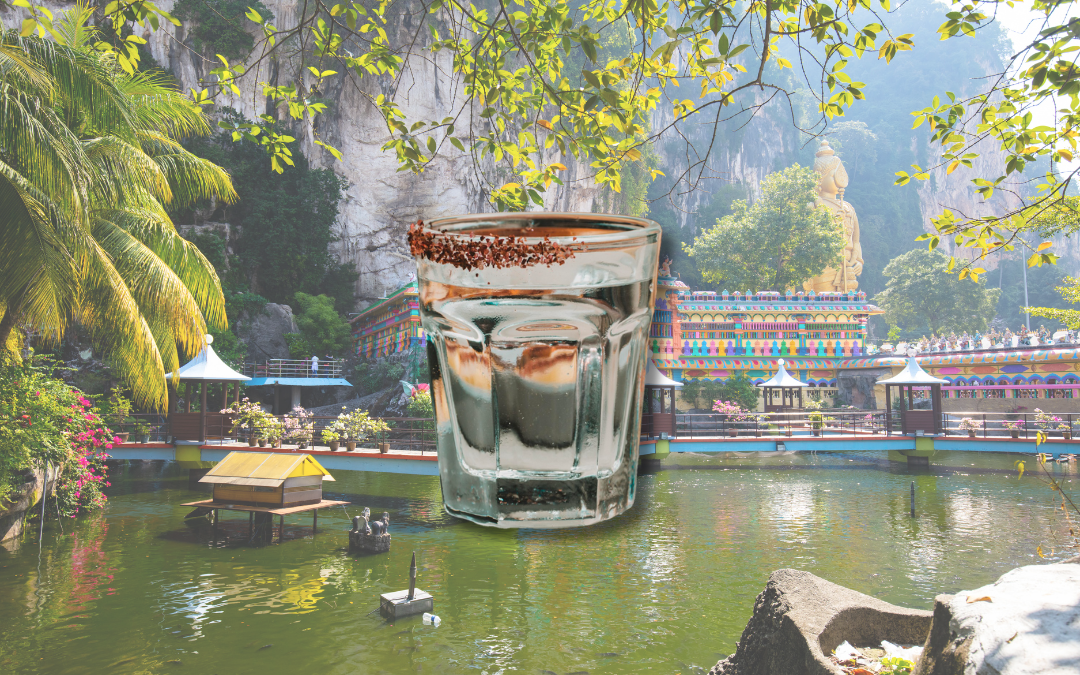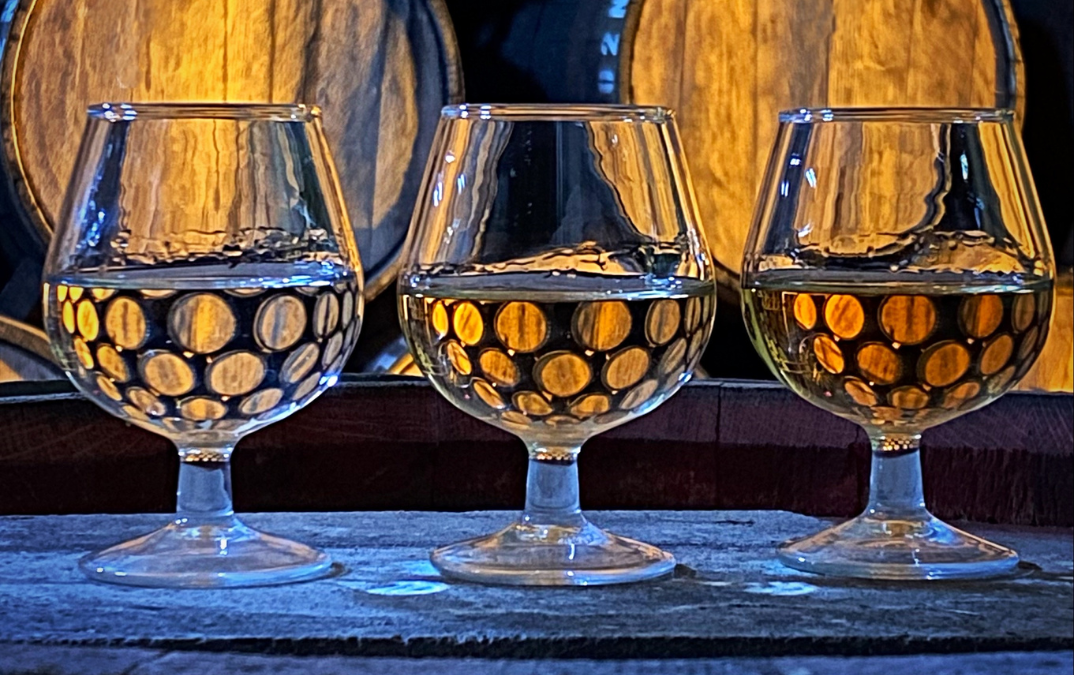What is Grappa ? – Part 4 – Types of distillation – Discontinuous-type stills
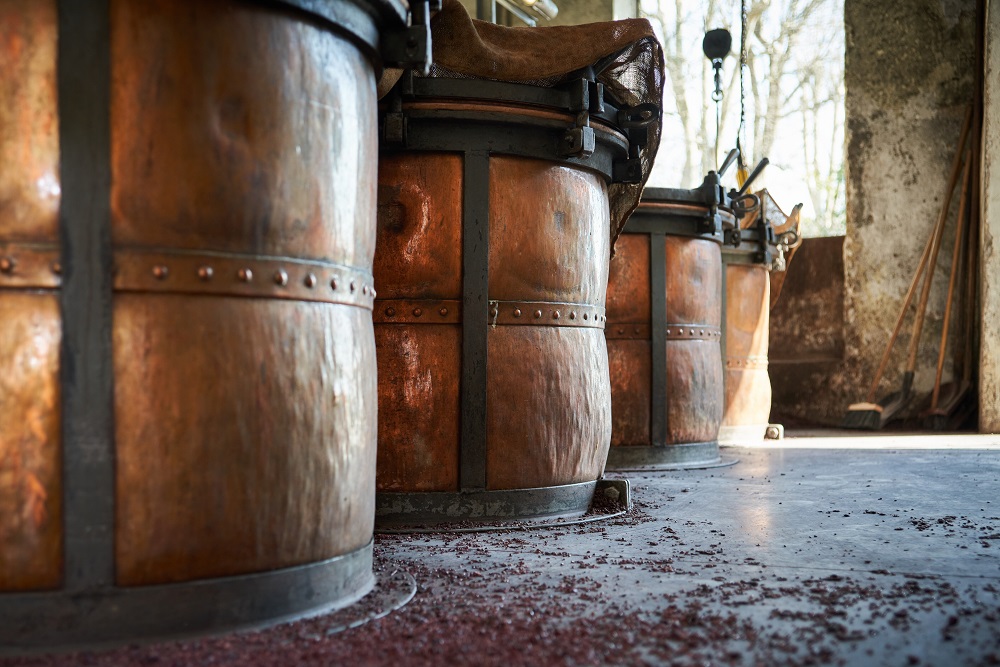
There are many types of discontinuous stills used for grappa. Many distillers customise them and there are many commercially available solutions. Let’s have a look at the 3 most common stills.
Compared to continuous distillation, where there are no interruptions in the process, with discontinuous distillation – the clue is in the name – there is a loading phase, a processing phase and then an unloading phase. This is why it is also referred to as batch distillation.
Special solutions have also been devised for distilling grappa, due to the fact that a solid substance is used and requires some care to prevent it from burning.
Discontinuous stills can be subdivided into:
- bain-marie discontinuous stills.
- discontinuous stills with cauldrons.
- direct fire stills.
The discontinuous bain-marie still
The discontinuous bain-marie still has three main parts: a distillation boiler, a column for stripping the alcohol and rectifying, a cooling system for the alcoholic vapours accompanied by a system for controlling the various distillation fractions.
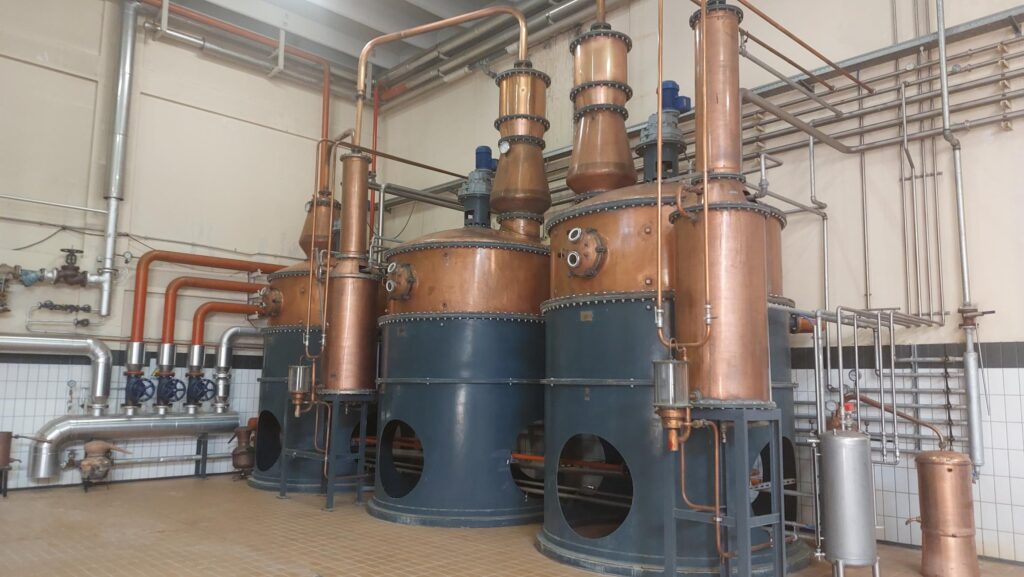
In appearance, the bain-marie still looks simple to operate, but in practice it is not. To briefly summarise the way it works, it starts with the distillation boiler or cucurbit where the pomace immersed in water is loaded. Once loaded, the mass is heated by pushing pressurised water vapour into the cavity located next to and below the distillation boiler. In this way the skins are heated up with indirect heat source preserving the raw materials from being burnt. The purpose of the bain-marie is to mitigate the strength of the heat from the direct flame and prevent damage. The bain-marie distillation system is also widely used for distilling fruit.
The boiling mass of water and pomace develops alcohol vapours that are conveyed to the base of the distillation column and slowly pass through it, undergoing concentration and cleaning. Highly concentrated alcohol vapours exit near the top of the distillation column and are transported to the system now using various methods (tube bundles) – in the past only coils were used – where it comes out condensed towards the system that controls the head, heart and tail fractions. Basically, the first liquid exiting the condenser is considered to be the head fraction – it is unsuitable for consumption and is discarded until it reaches a certain alcohol content because it contains unpleasant and dangerous volatile compounds. That’s when the heart, i.e. the grappa, comes along. The third fraction, which is unable to reach a certain alcohol content, is also discarded and called the tail fraction. The tail fraction contains sulphur compounds and oily compounds.
The discontinuous bain-marie still is used to distil grape pomace as well as other types of fermented raw materials, including fermented pears or other types of fruit. In some cases, with appropriate modifications the bain-marie boiler can be used to distil fermented cereals and even molasses.
The discontinuous stills with cauldrons
To describe them simply, discontinuous stills with cauldrons basically have three parts: one or more distillation cauldrons, a column and a cooling system complemented by equipment for cutting the distillation fractions.
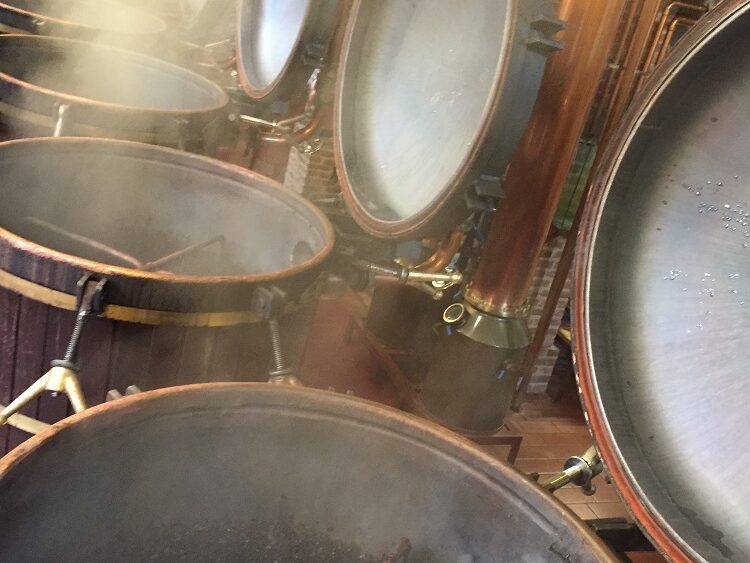
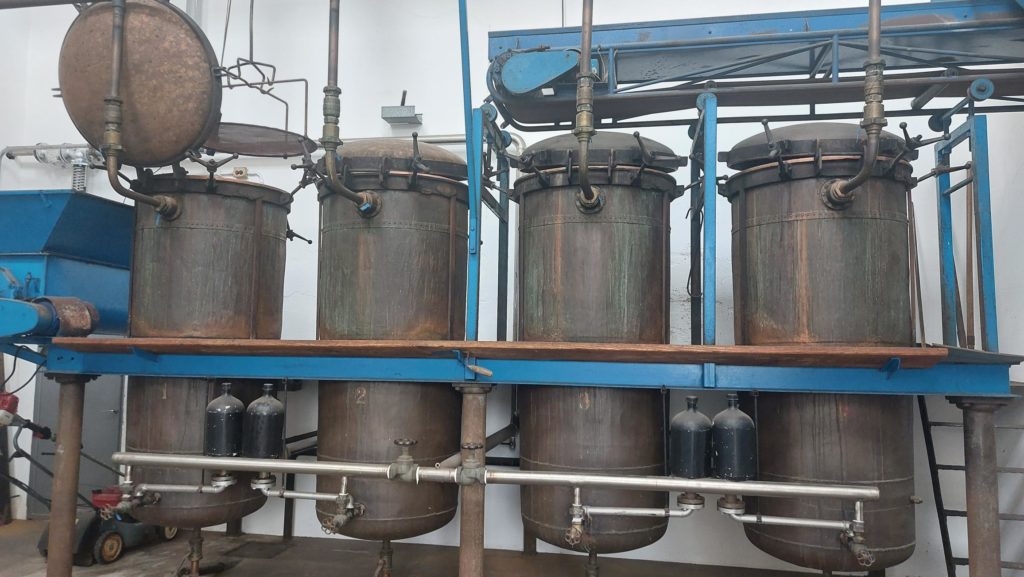
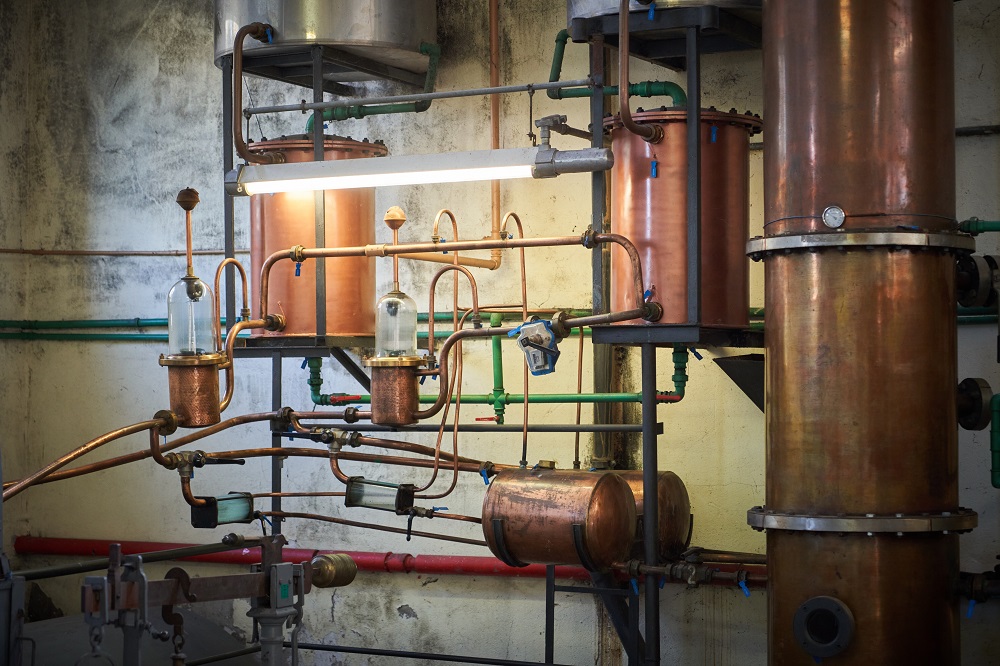
The distillation cauldron features a cylinder closed at the bottom and equipped with special valves for draining the liquid and injecting water vapour, and closed at the top with a large lid. Perforated partitions are placed inside the cauldron into which the pomace to be distilled is placed. The water vapour injected at the bottom of the cauldron passes through the grape pomace placed on the partitions and removes the alcohol and its component parts. This alcoholic vapour is conveyed through special piping to the distillation column where it undergoes concentration and alcohol stripping and is then bound for the cooling column to be condensed. In the discontinuous still with cauldrons, the head and tail fractions are also cut – only the heart fraction is kept. The cauldron system is widely used in many distilleries in the Veneto region.
The two discontinuous distillation systems have major differences in the way they operate. Also, the discontinuous cauldron still is more economical to operate than the more expensive bain-marie system, but it offers better and more gradual heating of the mass to be distilled.
Direct Fire Still
The direct fire still is the simplest and also the oldest version. Few distillation plants of this type are still in operation, the reason being that the system is very challenging to use because it can easily burn the pomace to be distilled. Controlling the heat must be carried out manually and with great care on the part of the operator, making it difficult to run this type of equipment, which is why it has been superseded by the more versatile discontinuous bain-marie system.
Excellent Grappas can be produced from each method and due to the countless variations on a theme chosen by the distiller or still manufacturer, there can also be hybrid solutions.
Is it possible to differentiate grappas according to the type of still used?
Usually the discontinuous ‘’bain-marie’’ distillation produces more delicate grappa, due to slower and gradual heating as well as a more precise ‘cutting of the heads’. But the differences between distillation methods are difficult to perceive and require a lot of experience.
Davide Terziotti
